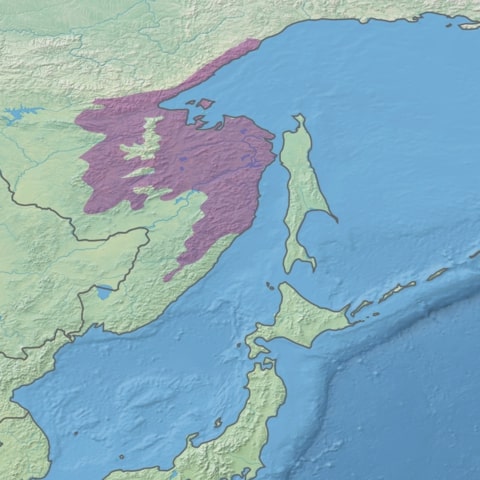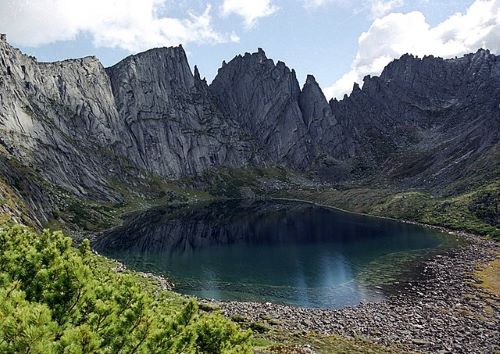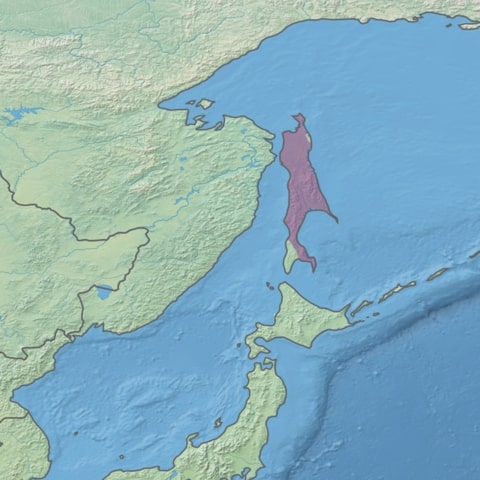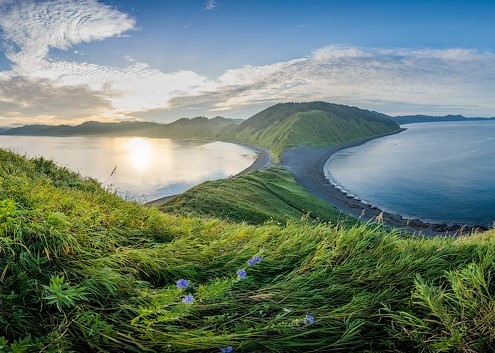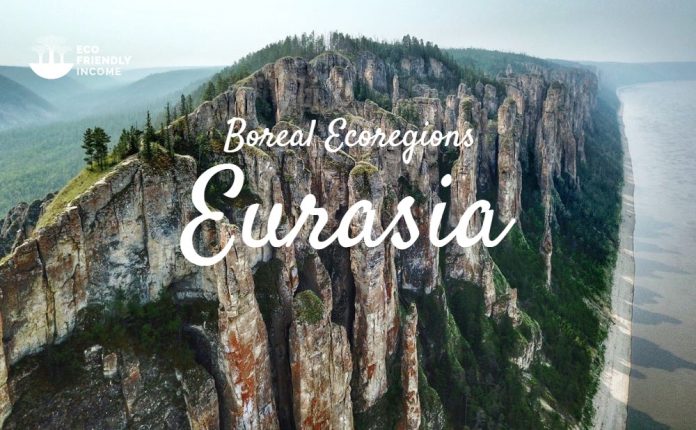
Featured Photo by Vsevolod Pulya / Russia Beyond
The expansive boreal ecoregions in the Northern Hemisphere are awe-inspiring wonderland that spans vast stretches of North America, Europe, and Asia.
These forests are abundant with an astonishing variety of wildlife, from majestic bears, and fierce wolves, to towering moose, as well as a mind-boggling array of plant, insect, bird, and fish species.
Given the immense size of these forests, the ecological characteristics of different areas can vary considerably, including climate, topography, and vegetation.
To better understand and manage the biodiversity of each region, ecologists have divided the boreal forest into ecoregions.
This approach enables the identification of areas that require increased protection and restoration efforts, allowing us to prioritize conservation actions where they are most needed.
Table of contents:
The Boreal Ecoregions – Eurasia
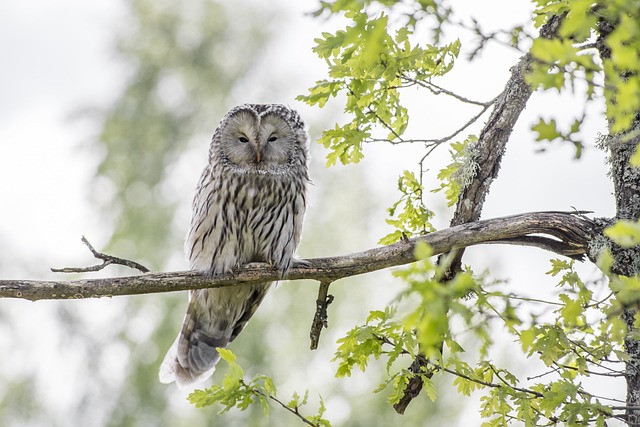
Welcome to the breathtaking and vast Boreal Ecoregions of Eurasia, where some of the most awe-inspiring landscapes and diverse ecosystems on the planet can be found.
From the snow-capped peaks of the Urals Montane Tundra & Taiga to the sprawling Trans-Baikal Conifer Forests and the seemingly endless Siberian Taiga, these 11 ecoregions are a testament to the resilience and adaptability of life in the face of extreme weather conditions and human impact.
The maps in the following section are provided to Wikipedia by Every-leaf-that-trembles / CC BY-SA 4.0 & Terpsichores / CC BY-SA 3.0 , and can be accessed on the list of terrestrial ecoregions page.
Iceland Boreal Birch Forests & Alpine Tundra
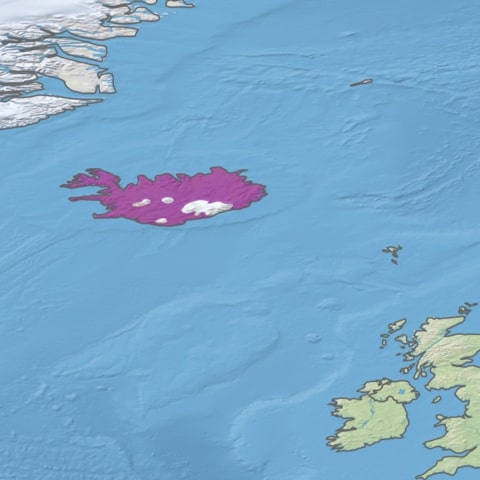
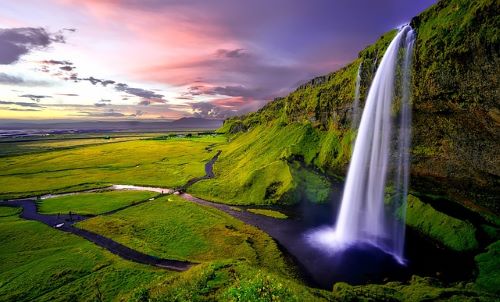
The Iceland boreal birch forests and alpine tundra ecoregion is a unique environment covering the volcanic island of Iceland in the North Atlantic.
The island’s basaltic soils and cold northerly climate make it unsuitable for significant crop agriculture. The ecoregion’s biodiversity is relatively low due to the island’s young age and isolation.
The original birch forest cover has been greatly reduced by timber extraction and soil erosion from sheep grazing, leaving mostly shrub-like birch with stands of Rowan and Tea-leaved willow.
The Arctic fox is the only indigenous mammal species in Iceland.
Soil erosion is the biggest ecological threat to the island. However, afforestation and soil conservation programs have recently helped stop and reverse the decline of vegetation.
Landmarks & Parks: Elephant Rock, Seljalandsfoss Falls
- Hornstrandir Nature Reserve
- Lónsöræfi Nature Reserve
- Þingvellir National Park
- Snæfellsjökull National Park
- Vatnajökull National Park
- Vatnsmýrin Nature Reserve
Emblematic Animals: Arctic Fox, Seals, Whales, Dolphins, Atlantic Puffins.
Scandinavian & Russian Taiga
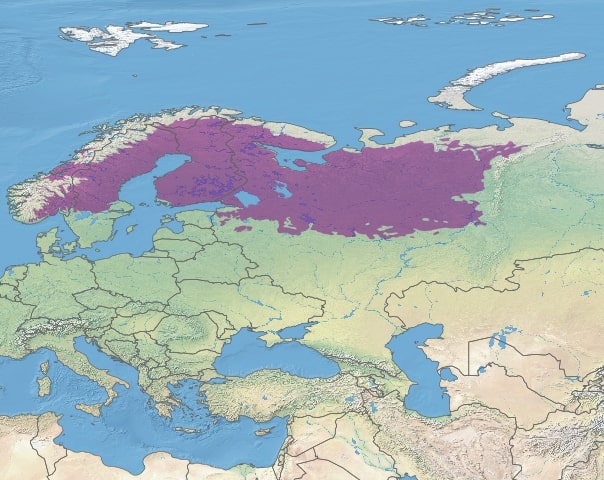
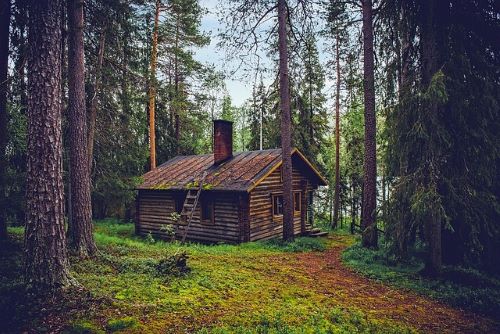
The Scandinavian and Russian taiga is a massive boreal ecoregion covering over 2 million square kilometers in Northern Europe.
It is dominated by coniferous forests, primarily Pinus sylvestris, with an understory of Juniperus communis and other trees like Betula pubescens and Betula pendula.
Landmarks & Parks:
- Björnlandet National Park
- Femundsmarka National Park
- Helvetinjärvi National Park
- Isojärvi National Park
- Koli National Park
- Liesjärvi National Park
- Muddus National Park
- Paanajärvi National Park
- Skuleskogen National Park
- Vodlozersky National Park
Emblematic Animals: Finnish Forest Reindeer, Eurasian Lynx, Brown Bear, Eurasian Beaver, Wolverine, Eurasian Elk.
Urals Montane Tundra & Taiga
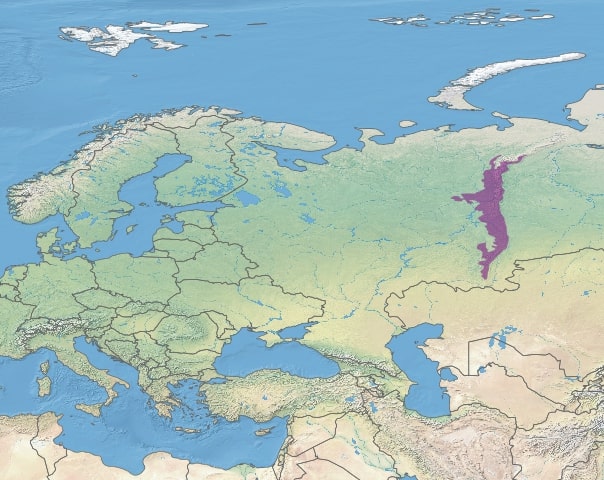
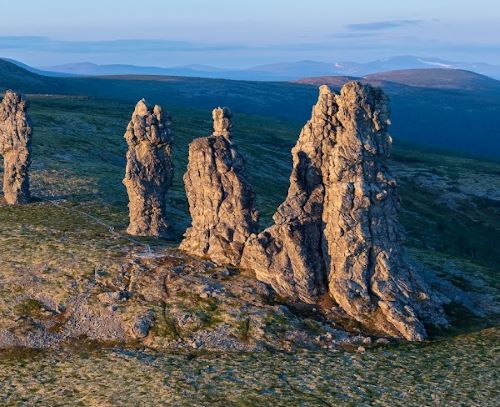
The Urals montane tundra and taiga ecoregion is a vast area covering the main ridge of the Ural Mountains.
It stretches 2,000 km (From north to South) and by 300 km (from west to east) and is a meeting point of tundra and taiga, making it a unique region.
At their peaks, the Ural Mountains reach heights of up to 1,895 m (6,217 ft) and are surrounded by the Russian and West Siberian Plains.
Landmarks & Parks: Man-Pupu-Ner
- Basegi Nature Reserve
- Bashkirsky Nature Reserve
- Pechora-Ilych Nature Reserve
- Visim Nature Reserve
- South Ural Nature Reserve
- Zyuratkul National Park
- Taganay National Park
Emblematic Animals: Ural Owl, Sable, Capercaillie, Brown Bear, Elk, Northern Pika.
West Siberian Taiga
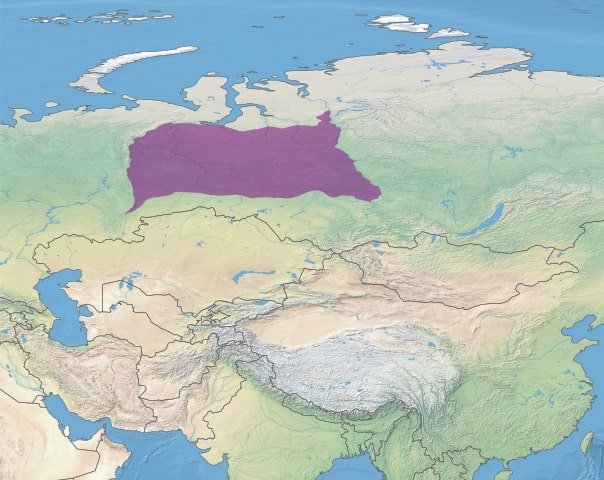
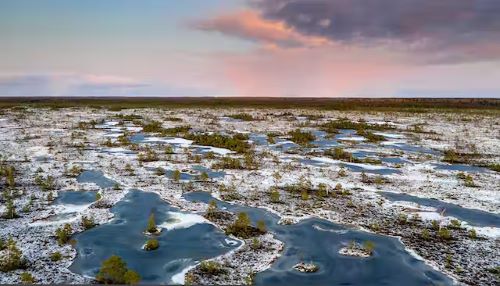
The Western Siberian Taiga starts on the east side of the Urals and stretches east through the Siberian plains.
As much as 40% of this area is peat bogs and swamps which makes it a huge C02 sink, and a great stronghold for boreal birds of all kinds.
Russian ecologist V.V. Alexin characterized the Western Siberian taiga by these 3 elements: Strong shade, swampiness, and the absence of elements of the broad-leaf forests.
The region is dominated by Siberian Spruce, Siberian Fir, Siberian Pine, Siberian Larch, and Scots Pine.
Landmarks & Parks:
- Denezhkin Kamen Nature Reserve
- Ilmen Nature Reserve
- Little Sosva Nature Reserve
- Pripyshminskiye Bory National Park
- Central Siberia Nature Reserve
- Upper Taz Nature Reserve
- Yugansky Nature Reserve
Emblematic Animals: Siberian Flying Squirrel, Tundra Shrew, Yellow-Breasted Bunting, Siberian Crane, White-headed duck, Greater Spotted Eagle, Red-breasted Goose, Horned Grebe, Rustic Bunting.
East Siberian Taiga
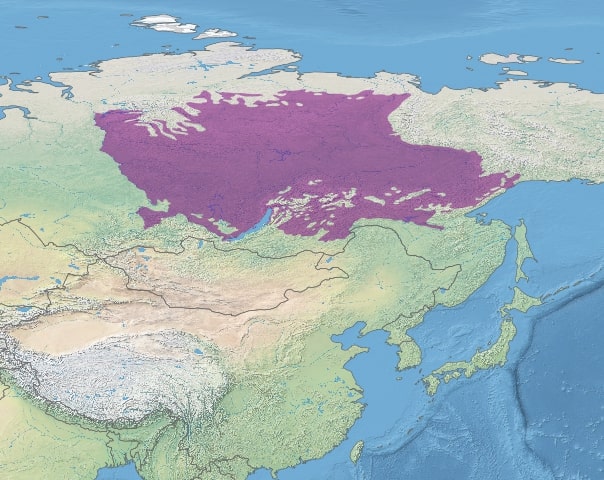
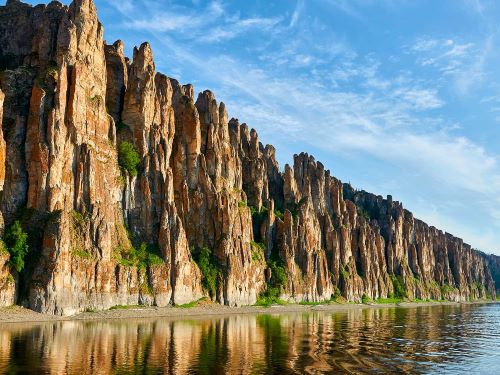
The East Siberian Taiga is the heart of Siberia, with extreme climate going as low as -65 in the winter.
The region is dominated by Siberian & Darurian Larch in the north, with more leafy trees like silver birch, downy birch, and aspen in the south.
Common understory shrubs are rhododendrons like bog rosemary, and labrador tea, and ericaceous shrubs like lingonberry, bog cranberry, and blueberries.
East Siberia is home to several UNESCO world heritage landmarks such as Stolby and the Lena Pillars.
Landmarks & Parks: Lena Pillars, Stolby, Lake Baikal, Tunguska Meteor Site.
- Stolby Nature Sanctuary
- Olyokma Nature Reserve
- Lena Pillar Nature Park
- Tunguska Nature Reserve
- Central Siberia Nature Reserve
Emblematic Animals: Baikal Seals, Siberian Tiger, Amur Leopard, East Siberian Brown Bear, Siberian Musk Deer, Olkhon Mountain Vole.
Northeast Siberian Taiga
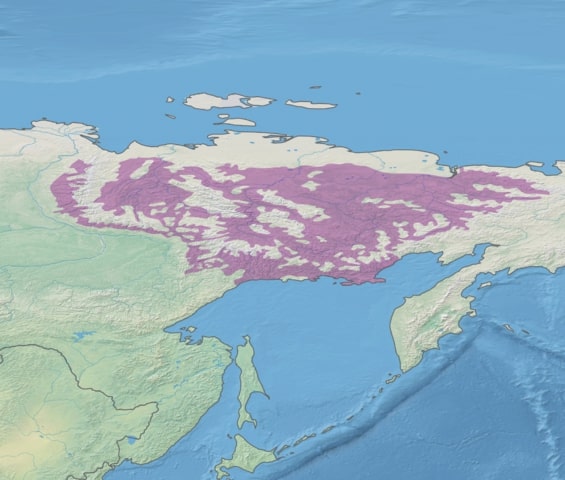
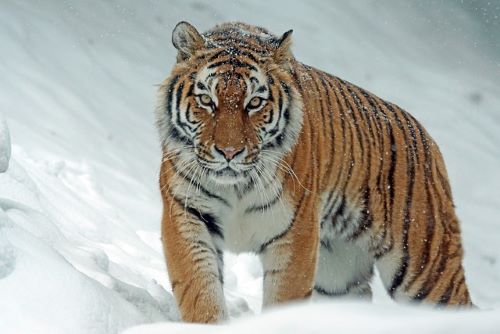
Northeast Siberian Taiga is a harsh boreal ecoregion, as a matter of fact, the entire region is subject to permanent permafrost.
The region is dominated Darurian Larch, dwarf siberian pines, and sparse leafy trees like silver birch.
The lowlands are often populated by grasses, sedges, and wildflowers like fireweed.
Northeast Siberian Coast is home to many sprawling colonies of seabirds that use the area as breeding grounds.
Landmarks & Parks:
Emblematic Animals: Siberian Tiger, Amur Lemming, Polar Bears, Siberian Cranes, Reindeer, Eurasian Common Scoter, Tufted Puffin, Crested Puffin, Black-legged Kittiwake, and Aleutian Terns.
Trans-Baikal Conifer Forests
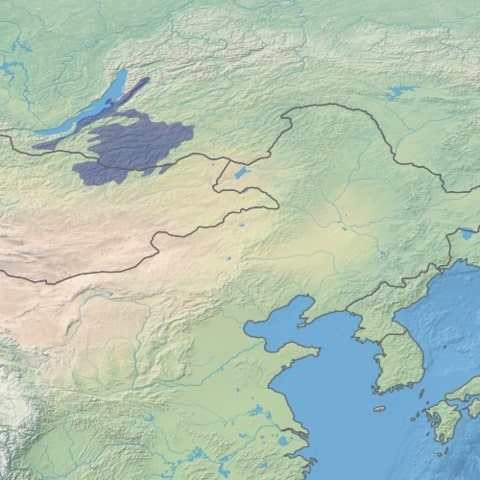
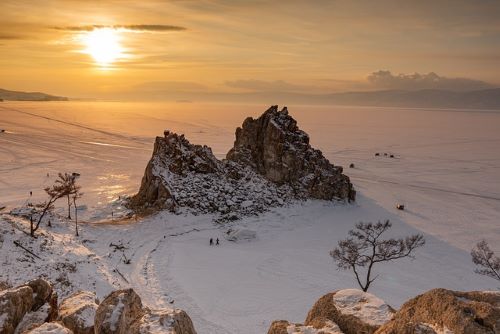
The Trans-Baikal Conifer Forests have myths and legends enshrouding them. It is said that the Great Ghengis Khan was born in this area and that he rests here to this day.
This mountainous boreal ecoregion splits the western coniferous forests with the eastern mixed forests and the grasslands of the Dahurian Steppe.
A common ericaceous shrub that embellishes the area is the Dahurian Rhodora (Rhododendron dauricum).
Landmarks & Parks: Lake Baikal, Great Burkhan Khaldun Mountain.
- Baikal Nature Reserve
- Barguzin Nature Reserve
- Sokhondo Nature Reserve
- Khan Khentii Strictly Protected Area
- Onon-Balj National Park
Emblematic Animals: White-naped Crane, Grasshopper Warbler, Musk Deer, Marmots, Raccoon Dog, Baikal Sturgeon, Siberian Taimen.
Okhotsk-Manchurian Taiga
The Okhotsk-Manchurian Taiga is home to the Amur River, the world’s tenth-largest river.
This boreal ecoregion offers a variety of landscapes, a meeting for multiple mountain ranges such as the Sikhote-Alin, the Badzhal’skiy, and the Dzhugdzhur Mountains.
The Amur river itself offers vast wetlands that attract all sorts of birds.
The variety of landscapes gives home to an equally matching variety of trees, shrubs, and wildflowers.
You’ll find trees such as Yeddo Spruce, Dahurian Larch, and Hinggan Fir in the north, and Korean Pine, Painted Maple, Korean Birch, Manchurian Ash, and Amur Linden in the south.
A particularly common shrub found here is the Alpine Cranberry or Lingonberry.
Landmarks & Parks: Amur River, Bear Lake.
- Botcha Nature Reserve
- Bureya Nature Reserve
- Dzhugdzur Nature Reserve
- Komsomolsk Nature Reserve
- Shantar Islands National Park
Emblematic Animals: Siberian Grouse, Siberian Musk Deer, Reindeer, Oriental Cuckoo, Oriental White Stork, Kaluga Sturgeon, Blakiston’s Fish-Owls, Amur Tiger.
Sakhalin Island Taiga
Sakhalin Island is a boreal ecoregion found in Russia’s far east. Here you’ll find a landscape of meadows with gigantic grasses, and strange mud volcanoes.
In the north, Sakhalin forests are dominated by larch sparely dotted with birch, and in the south, spruce and Sakhalin Fir become more common.
In the meadows of the south, many plant species such as Ample Butterbur, Giant Knotweed, and Japanese Cardiocrinum attain gigantic proportions.
These plants can reach as tall as 4m each, making a Jurassic Park-esque landscape of the area. This is primarily due to the combination of climate, sea salts, rich soils, and volcanic activity of the area.
Landmarks & Parks: Turquoise Lake.
Emblematic Animals: Nordmann’s Greenshank, Aleutian Tern, Gray Whales, Sakhalin Taimen, Chum, Masu-cherry, and Coho Salmon, Siberian Musk Deer, Brown Bears.
Kamchatka-Kurile Taiga
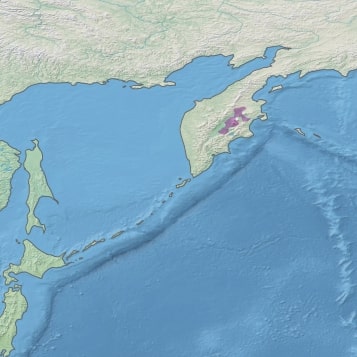
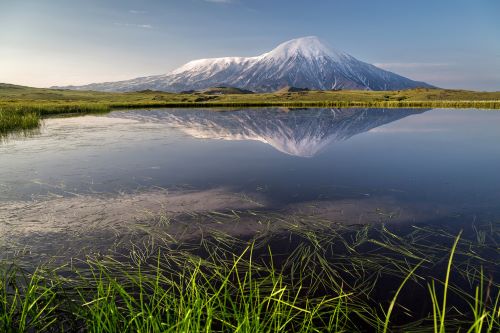
This boreal ecoregion is a conifer island in the middle of the Kamchatka-Kurile Peninsula.
This well-hidden forest in between volcanic and snowy-peaked mountains is dominated by Dahurian Larch, Yezo Spruce, and Japanese White Birch.
The Kamchatka river, which runs in the middle of the ecoregion, is a hotspot for salmon the Kamchatka Brown Bear.
Landmarks & Parks: Tobalchik, Kamchatka river.
Emblematic Animals: Black-capped Marmot, Kamchatka Brown Bear, Pink, Keta, Coho, Sockeye, and Chinook Salmon, Snow Ram, Northern Deer.
Kamtchatka-Kurile Meadows & Sparse Forests
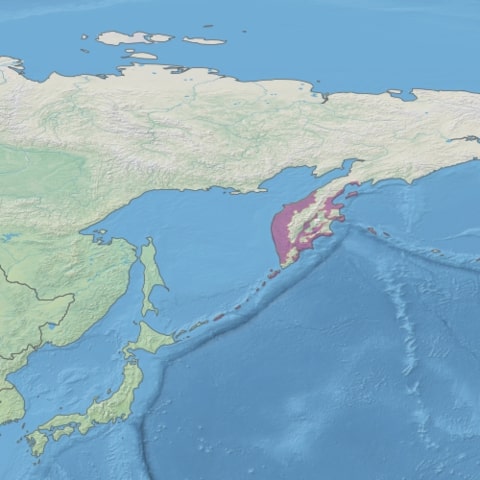
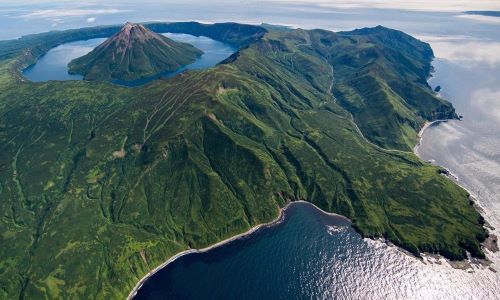
This ecoregion is vastly coastal, covered in meadows, and sparse forests, but it also has a chain of archipelago islands to the south.
Some call it the land of fire and ice, as volcanoes rage here even in the middle of winter.
The volcanic ashes create superb conditions for plants here to grow to gigantic proportions.
Plants like meadowsweet, Angelica ursina, and Parasenecio hastatus can reach over 3m in height.
As the area is also a great spawning ground for Salmons, the Kamchatka Bear naturally thrives here.
Additionally, every year, up to 5 million birds from 30 different species use the coastal cliffs and wetlands as nesting grounds.
Landmarks & Parks: Krenitsyn Volcano.
- Kronotsky Nature Reserve
- Komandorsky Nature Reserve
- South Kamchatka Sanctuary
- Utkholok Meadows Nature Reserve
- Juzhno-Kamchatskiy Nature Park
Emblematic Animals: Leach’s Storm petrol, Aleutian Tern, Red-legged Kittiwake, Stellar’s Sea Eagle, Kamchatka Brown Bear, Salmon, Sea otters, Stellar Sea Lion.

